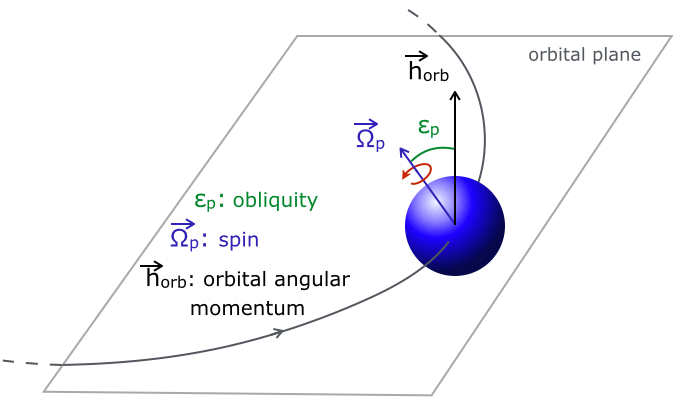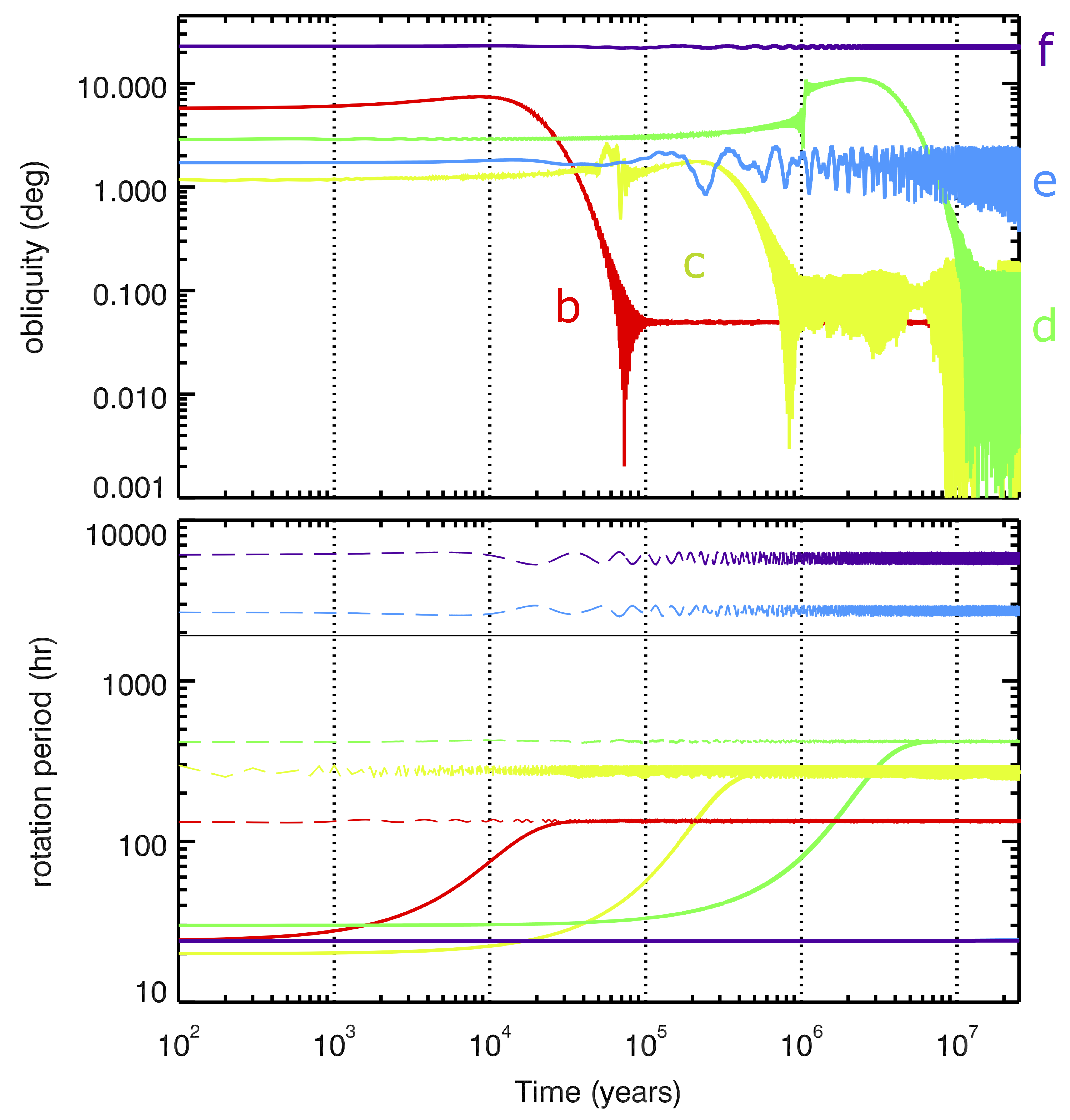
In a few words:
- Orbital evolution of extra-solar planetary systems
- Tidal evolution of close-in extra-solar planets
- Brown dwarfs
- Climates of extra-solar planets
- Planet detection and characterization
In more details:
The new planetary systems discovered everyday are very different from our solar system. Some of them are much more compact than the Solar System. Some planets are located extremely close-in from their star, within the orbital distance of Mercury, in a region where tidal effects are important. Understanding the structure of the known exoplanetary systems and the future ones requires to take into account the physics of tidal evolution.
The missions dedicated to the finding of exoplanets are beginning to detect low mass planets in the habitable zone of their host star. The habitable zone is here defined as the range of orbital distances where a planet with an atmosphere can sustain liquid water at its surface. The study of the climate of exoplanets, given a stellar flux and spectra, is important for the characterization of planetary atmosphere — which the James Webb Space Telescope (JWST) will make possible.
I am focusing on the dynamical and tidal evolution of planetary systems orbiting evolving brown dwarfs and low mass stars in order to constrain some tidal parameters and in the case of planets around brown dwarfs put some constrains on observability.
First, I studied the tidal evolution of
single-planet systems orbiting a brown dwarf, a M-dwarf or a
Sun-like star whose radius evolution is taken into account (Bolmont
et al. 2011, 2012). The aim of this study was to study the
influence of the contraction of the brown dwarf or star on the
orbital evolution of the planets.
Second, I endeavored to study the tidal evolution of multiple-planet systems:
- Detected systems: 55 Cnc (Bolmont et al. 2013, Demory et al., Nature, 2016); Kepler-186 (Bolmont et al. 2014); TRAPPIST-1 (Gillon et al. 2016, 2017; Luger et al. 2017)
- Hypothetical ones: orbiting a brown dwarf, a M-dwarf or a Sun-like star whose radius evolution is also taken into account.
These two projects allow me to study the question of the habitability of planets orbiting those objects, in particular orbiting brown dwarfs which are known to cool down with time. A planet orbiting a brown dwarf in its habitable zone is sufficiently close to the brown dwarf to feel tidal effects. So parameters such as the eccentricity or obliquity, which are important for the climate are partially determined by tides.
Mercury-T: a code to study tidally evolving multi-planet systems (Bolmont et al. 2015)
Mercury-T is based on the N-body code Mercury (Chambers 1999).
Thanks to Christophe Cossou, it is now in fortran 90 (Mercury in f90).
It allows us to calculate the evolution of semi-major axis, eccentricity, inclination, rotation period and obliquity of the planets as well as the rotation period evolution of the host body.
This code is flexible in so far as it allows to compute the tidal evolution of systems orbiting any non-evolving object (provided we know its mass, radius, dissipation factor and rotation period), but also evolving brown dwarfs (BDs) of mass between 0.01 and 0.08 M⊙, an evolving M-dwarf of 0.1 M⊙, an evolving Sun-like star, and an evolving Jupiter.
The evolution tracks of these bodies come from the works of Leconte et al. (2011) for brown dwarfs, Chabrier & Baraffe (1997); Baraffe et al. (1998) for the M-dwarf of 0.1 M⊙, and Leconte & Chabrier (2013) for Jupiter.

Definition of the obliquity of a planet: angle between the spin vector of the planet and its orbital angular momentum.

Evolution of the obliquity and rotation period of the planets of the Kepler-186 system.
If you wish to use Mercury-T,
you can download it here
(last modified
08/03/2017)
Here, you can find the
manual:
(last modified
24/05/2018)

Posidonius: a faster, more reliable, more generic code to study tidally evolving multi-planet systems (Blanco-Cuaresma & Bolmont, 2017; Bolmont et al. in prep)
Posidonius is a N-body code for simulating planetary and/or binary systems which implements the WHFAST integrator (Rein & Tamayo 2015) and the tidal model used in Mercury-T (Bolmont et al. 2015).
Physics
Similarly to Mercury-T, the bodies in the simulation can be static or follow predefined evolutionary models matching FGKML stars and gaseous planets. The simulations can account for several different effects:
- Tidal forces
- Rotationnal-flattening effects
- General Relativity corrections
Posidonius has a better spin integration than Mercury-T, it's more than six times faster, it conserves the total angular momentum of the system one order of magnitude better and the spin to rotational-fattening evolution five orders of magnitude better.
It also allows a wider variety of configurations. For instance, it can simulate the evolution of evolving binary stars with planets, or an evolving Jupiter mass planet around an evolving star.
Technology
The N-body code is written in Rust, a systems programming language that runs as fast as Fortran/C, prevents segmentation faults, and guarantees thread safety. Its main characteristics are:
- Zero-cost abstractions
- Guaranteed memory safety
- Threads without data races
Rust benefits for the astronomical community
were already exposed in Blanco-Cuaresma
et al. 2017. Posidonius also provides a Python package to
easily define simulation cases in JSON format, which can be read by
the Posidonius integrator and ensures
reproducibility.
